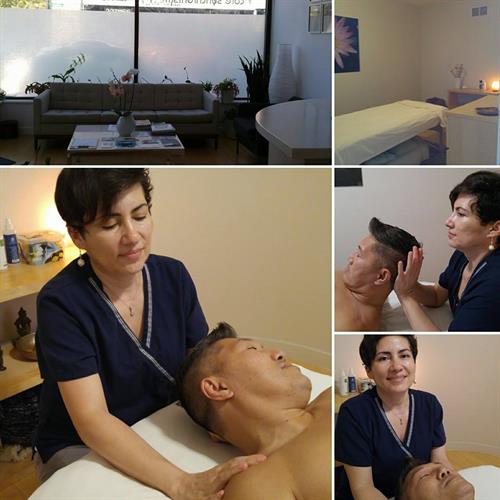 How is Neuromuscular Therapy different from what I’ve already tried?
How is Neuromuscular Therapy different from what I’ve already tried?
Neuromuscular therapy has a distinct therapeutic philosophy. Is an effective treatment for back pain caused by soft tissue injury.
Here’s how it compares to certain other modalities:
Chiropractic – Chiropractors do an excellent job of mobilizing joints. The person feels better immediately because when pressure is released from the joint, the muscles that insert over that joint also loosen up. Neuromuscular therapists look at a number of factors that a typical chiropractor doesn’t have time for. They look at the body as a whole to see why the joint came under pressure in the first place. Also, since muscles move bones, the neuromuscular approach can address muscle tension that predisposes the joint mobilization problem.
Physical Therapy – Physical therapists generally work from a philosophy of therapeutic exercise and symptomatic treatment. When the problem is lack of strength, physical therapy is a great resource. In cases of chronic pain, the tissue is often fatigued, not weak. Neuromuscular therapists work with the body to take the strain off fatigued tissue and place the structural load of the body back over its skeletal system as it should be. This requires assessment of the whole body rather than focusing exclusively on symptoms. Physical therapy programs are often symptom-driven, with treatment to the general region of complaint. Neuromuscular therapy is specific to the involved tissue, within a whole-body context.
Massage Therapy – Massage therapy is a wonderful way to relax from physical stress. Nearly everyone can benefit from a well-timed and well-executed massage. Nonetheless, Swedish massage and neuromuscular therapy have several important differences for the pain patient. Most significantly, general massage therapists may attempt to address symptoms without considering them in context. Despite their best intentions, this strategy may be ineffective in cases where the person’s symptoms are created as compensation for problems somewhere else in the body. The neuromuscular therapist places the symptoms in context, and then works specifically to resolve the underlying structural pattern. Neuromuscular therapists use massage techniques, but they’re delivered in a different package than the general therapists use.
Applied energy therapies (Reiki, Healing Touch, Acupuncture, Hypnotherapy, Cranio-Sacral Therapy) – Energy modalities, skillfully applied, offer an opportunity to address underlying energy imbalances that may have contributed to the presenting physical symptom. People who understand the relationship between body energy and physical circumstances often appreciate these therapies as part of their program. The main difference between energy therapies and neuromuscular therapy is that the energy modalities affect the person’s subtle energy systems and neuromuscular therapy works directly with the physical substance of the body.
Surgery – In some cases, surgery is definitely the best answer. When tissue has been ripped, torn, fractured, or the nucleus of a vertebra herniated, your physician will generally recommend surgery. People often consult their doctor about a degenerative condition when it first becomes painful. The initial pain is a great signal from the body that something’s wrong. But if the doctor says surgery isn’t immediately necessary, a conservative approach like Neuromuscular Therapy can often slow down the condition’s progress. Correcting ineffective posture minimizes the structural load on vulnerable joints. Loosening muscles that insert over a joint will result in less joint pressure. These strategies can minimize the effects of a degenerative process, delaying the need for surgery. When in doubt, ask your doctor.
